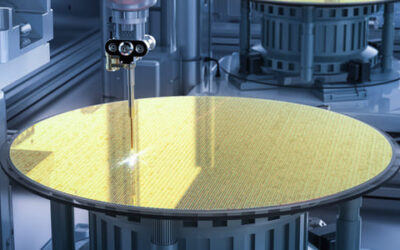[dsm_gradient_text gradient_text="Your AI Ready for the Future? Inside the New AI Maturity Model" _builder_version="4.27.0" _module_preset="default" header_font="Questrial|||on|||||" header_text_align="center" header_letter_spacing="5px" filter_hue_rotate="100deg"...
IATF 16949: Navigating the Core Tools - APQP, PPAP, FMEA, MSA, and SPC
In the fast-paced world of automotive manufacturing, quality isn’t just a goal — it’s a requirement. That’s why IATF 16949, the internationally recognized standard for automotive quality management systems, mandates the use of five essential Core Tools. These tools — APQP, PPAP, FMEA, MSA, and SPC — are the backbone of quality planning and control across the automotive supply chain.
#IATF 16949 #core tools #PPAP #FMEA #SPC #MSA #APQP #automotive

Understanding the Core Tools in the Automotive Industry: A Solid Foundation for Quality
In the automotive industry, precision, reliability, and consistency are not optional — they’re critical. Every component, from the smallest bolt to the most complex electronic system, must meet rigorous standards to ensure safety, performance, and customer satisfaction. To manage this complexity and maintain high quality across the entire supply chain, the automotive sector relies heavily on a set of structured quality management tools known as the Core Tools.
These Core Tools — PPAP (Production Part Approval Process), FMEA (Failure Mode and Effects Analysis), MSA (Measurement System Analysis), and SPC (Statistical Process Control) — form the backbone of quality planning and control in the automotive world. They are closely linked to the IATF 16949 standard, which defines the requirements for a quality management system specifically for the automotive sector. These tools were developed to help manufacturers and suppliers design, launch, and maintain processes and products that consistently meet customer and regulatory requirements.
Each tool serves a specific purpose but works best as part of an integrated quality system. Together, they guide companies through every phase of product and process development — from initial concept to mass production and beyond. Whether you are a seasoned quality engineer, a supplier manager, or a team member involved in product development, understanding these tools is essential for success in the automotive industry.
The implementation of these tools is not just about meeting compliance requirements — it’s about building a culture of quality. When used correctly, the Core Tools lead to better product performance, fewer defects, lower costs, and stronger customer relationships.
In today’s competitive automotive landscape, mastering the Core Tools is a key differentiator. They provide a clear roadmap for building quality into every step of the product lifecycle and form a common language that connects OEMs with their global supplier networks. As vehicles become more advanced and regulations tighter, the importance of these tools will only continue to grow.
In the following sections, we’ll explore each Core Tool in depth, breaking down how they work, why they matter, and how you can apply them effectively in real-world scenarios.
1. Control Plan – Keeping the Process in Control
A Control Plan is a detailed document that outlines how to control and monitor critical parts of a manufacturing process to ensure consistent quality. It helps make sure that the right checks are in place at the right steps.
A Control Plan typically lists:
- What to measure – Critical product or process characteristics
- How to measure it – Tools, equipment, and methods used
- How often to check – Frequency of inspections or tests
2. PPAP (Production Part Approval Process)
Makes sure the product and manufacturing process meet all customer requirements before full production begins.
- A formal approval process before mass production
- Includes key documents like control plans, drawings, and test results
- Shows the customer that you’re ready to build parts that meet expectations
3. FMEA (Failure Mode and Effects Analysis)
Identifies possible failures in a product or process and finds ways to fix or reduce them.
- Helps prevent problems before they happen
- Focuses on what could go wrong, how bad it would be, and how to control it
- There are two main types: Design FMEA and Process FMEA
4. MSA (Measurement System Analysis)
Checks if your measuring tools and systems are accurate and reliable.
- Ensures your data is trustworthy
- Important for inspections and quality checks
- Includes studies like Gage Repeatability and Reproducibility (Gage R&R)
5. SPC (Statistical Process Control)
Uses data and charts to monitor how well a process is working during production.
- Helps detect problems early
- Reduces waste and variation
- Keeps production running smoothly and consistently
❓ So, Is APQP a Core Tool or Not?
🔍 Short Answer: APQP is widely used and strongly recommended in the automotive industry, but it is not directly required by IATF 16949 in the same way as the other Core Tools.
📘 What IATF 16949 Actually Says
IATF 16949 does not explicitly require the use of APQP by name.
Instead, it requires that organizations:
- Use a product and process development methodology
- Have a project management approach
- Perform quality planning
- Ensure cross-functional collaboration and risk management during development
➡️ This is where APQP fits in naturally — it’s the most common and widely accepted method to fulfill those requirements, especially because it was developed by AIAG with input from major automakers like Ford, GM, and Chrysler.
💡 So Why Is APQP Still Called a Core Tool?
Even though it’s not required by name:
- APQP is used to manage and coordinate all the other tools
- It helps companies align with IATF 16949’s intent and structure
- AIAG includes it as one of the Big Five Core Tools
- OEMs (like GM, Ford, Stellantis) often require APQP in their customer-specific requirements
So while not legally mandated by IATF 16949 on its own, APQP is the de facto industry standard for advanced quality planning.
%
PPAP Level 3
Over 70% of Tier 1 and Tier 2 automotive suppliers consider PPAP Level 3 the default requirement for OEM approvals. Level 3 PPAP includes full documentation and physical samples, providing the most comprehensive level of process readiness validation. Source: Automotive Supplier Benchmarking Surveys (AIAG, 2022)
%
IATF 16949 NCs
More than 80% of IATF 16949 non-conformities are related to poor documentation or incomplete PPAP elements. This underscores the importance of a structured and well-documented PPAP process for maintaining certification and avoiding disruptions in the supply chain. Source: IATF 3rd Party Audit Findings Report
APQP – Advanced Product Quality Planning: A Deep Dive into Automotive Quality
In the automotive industry, where precision and safety are paramount, developing high-quality products is non-negotiable. To ensure that new products meet customer expectations and industry standards, manufacturers rely on structured approaches like APQP – Advanced Product Quality Planning. APQP is more than just a tool—it’s a comprehensive framework that supports effective planning, risk management, and cross-functional collaboration from the earliest design stages to full production.
Whether you’re a supplier or an OEM, understanding APQP is crucial to delivering reliable products and maintaining strong customer relationships. In this article, we’ll explore the purpose, practical application, real-world use, and best practices of APQP in the automotive industry.
Purpose of APQP
At its core, APQP is a structured, systematic process designed to ensure that a product meets the customer’s expectations. It’s built on the principles of quality planning, early risk identification, and continuous improvement.
The APQP process focuses on:
- Defining customer requirements clearly
- Translating those needs into technical specifications
- Designing reliable products and processes
- Validating results before mass production
- Ensuring ongoing improvement after launch
APQP is often described as a roadmap that connects customer expectations with product and process development. It helps teams identify potential issues early, reduce late-stage changes, and build a strong foundation for consistent quality.
While APQP is most commonly associated with the automotive sector, its principles can be applied in any industry where quality, timing, and customer satisfaction are critical.
Practical Application: APQP as a Roadmap
Imagine you’re driving from point A (product idea) to point B (mass production). APQP is the map that keeps you on track, guiding you through each stage with well-defined steps and milestones.
APQP is typically broken down into five key phases:
1. Plan and Define Program
- Understand customer requirements and expectations.
- Set goals, timelines, and define project scope.
- Develop product feasibility and initial risk assessments.
2. Product Design and Development
- Create detailed product designs and specifications.
- Conduct design reviews and use tools like Design FMEA (DFMEA).
- Develop prototypes and evaluate them for functionality and compliance.
3. Process Design and Development
- Design the manufacturing process based on the product design.
- Develop process flow diagrams, Process FMEA (PFMEA), and control plans.
- Ensure the process is capable of consistently producing quality parts.
4. Product and Process Validation
- Validate the product and process through pilot production runs.
- Conduct Measurement System Analysis (MSA) and Statistical Process Control (SPC).
- Complete a Production Part Approval Process (PPAP) package for customer approval.
5. Feedback, Assessment, and Continuous Improvement
- Monitor performance, gather feedback from production and customers.
- Address any quality or process issues quickly.
- Use the data to drive improvements over time.
Real-World Example: Airbag System Development
Let’s look at a real-world example to understand APQP in action. A Tier 1 supplier is tasked with developing a new airbag system for a global automotive OEM. This system is critical for safety and must comply with strict performance standards.
Here’s how APQP would guide the process:
- Planning Phase – The supplier meets with the OEM to understand requirements like deployment time, operating temperature range, packaging constraints, and crash test targets.
- Product Design Phase – Engineers design the airbag module and use DFMEA to identify potential failure modes such as delayed deployment or wiring issues. They test different inflator designs and materials for performance and durability.
- Process Design Phase – Manufacturing engineers create a process flow for assembly and testing. They perform PFMEA to identify risks like incorrect sensor placement or welding issues. A Control Plan is established to manage these risks.
- Validation Phase – Prototypes are produced and tested under simulated crash conditions. MSA studies are done on test equipment to ensure measurement accuracy. A PPAP package is submitted to the OEM with all validation data.
- Launch and Improvement – Once approved, full production begins. Data from SPC charts and customer feedback is reviewed regularly. When early production shows a slight variance in inflator pressure, a design tweak is made, and the process is improved.
Thanks to APQP, the supplier was able to align every team, identify risks early, validate performance before launch, and react quickly to feedback — delivering a high-quality, safety-critical product on time.
Best Practices for APQP Success
Implementing APQP effectively requires discipline, teamwork, and clear communication. Here are some best practices to get the most out of the process:
✅ 1. Start Early
- Begin APQP during the concept phase, not after design is finalized.
- Early planning helps avoid costly changes and delays later.
✅ 2. Use Cross-Functional Teams
- Involve people from engineering, quality, manufacturing, purchasing, and logistics.
- Different perspectives help identify risks and improve designs.
✅ 3. Follow the Checklist
- Use the AIAG APQP checklist to track progress and ensure all required activities are completed.
- This also helps with audit readiness and documentation control.
✅ 4. Link Tools Together
- Use FMEAs to inform Control Plans, and use MSA and SPC to monitor key characteristics identified in risk assessments.
- APQP isn’t just about checking boxes — it’s about using each tool to support the others.
✅ 5. Document and Review
- Maintain clear records of design reviews, validation results, and process trials.
- Conduct regular gate reviews at the end of each phase to stay on schedule.
✅ 6. Engage the Customer
- Keep the customer involved through design reviews, validation plans, and feedback loops.
- This builds trust and ensures alignment with their expectations.
📈 Why APQP Matters More Than Ever
As vehicles become more complex — with advanced electronics, safety features, and sustainability targets — the need for robust product planning is growing. APQP helps organizations:
- Reduce time-to-market
- Minimize costly rework and recalls
- Improve product quality and reliability
- Strengthen supplier-customer relationships
It also supports compliance with IATF 16949, even if it’s not explicitly named in the standard. Many OEMs include APQP as part of their customer-specific requirements, making it essential for global suppliers.
APQP is a powerful framework that brings structure, clarity, and teamwork to the often chaotic process of launching new automotive products. It connects the dots between design, process, validation, and continuous improvement, helping manufacturers deliver the right product, the right way, the first time.
By starting early, involving the right people, and staying committed to the process, teams can avoid surprises and build better products that meet or exceed customer expectations.
In short, APQP is not just paperwork — it’s a mindset. It’s how great products get built in the automotive world.
PPAP – Production Part Approval Process: Ensuring Quality Before Production Begins
In the automotive industry, quality cannot be left to chance. Before a part ever enters mass production, it must be proven that it meets the customer’s design and quality standards. That’s where PPAP – Production Part Approval Process comes in. PPAP is a structured method used to ensure that suppliers can consistently produce parts that meet customer expectations — not just once, but over the long haul.
Whether you’re a new supplier or launching a new product, PPAP is the final checkpoint before production starts. It provides both the supplier and the customer with confidence that everything is ready for full-scale manufacturing.
In this article, we’ll explore the purpose, practical use, real-world examples, and best practices for using PPAP effectively in the automotive world.
🔍 Purpose of PPAP
PPAP exists to validate two critical things:
- That the product design meets all engineering specifications.
- That the manufacturing process can consistently produce parts within those specifications.
In other words, it’s about proof of readiness. It shows the customer that you’ve done your homework, your process is stable, your parts meet the specs, and you’re ready to move from prototype or pilot runs into actual production.
Originally developed by AIAG (Automotive Industry Action Group), PPAP is widely used in the automotive supply chain and is often required by OEMs like Ford, GM, Stellantis, Toyota, and others. It is also used in other industries such as aerospace and heavy equipment manufacturing.
🛠️ Practical Application: PPAP in Action
Think of PPAP as the quality go/no-go gate between product development and mass production. It includes a package of documents and samples that the supplier submits to the customer for review and approval.
The process typically takes place after product and process development (APQP) is complete, but before regular production begins. It verifies that:
- All engineering and design requirements are understood and met
- The process is capable, repeatable, and under control
- The quality system is in place to detect and respond to issues
The PPAP package usually includes 18 elements, such as:
✅ 1. Design Records
A copy of the original customer-provided drawing or design document, including all specifications and part numbers.
✅ 2. Authorized Engineering Change Documents
Documentation of any authorized changes to the design records that have not yet been incorporated into the released design.
✅ 3. Engineering Approval
Evidence (e.g., signed test results) that the part has been reviewed and approved by the customer engineering team.
✅ 4. Design Failure Mode and Effects Analysis (DFMEA)
A systematic analysis of potential failure modes in the product design and their effects, including severity, occurrence, and detection ratings.
✅ 5. Process Flow Diagram
A visual representation of every step in the manufacturing process — from receiving raw materials to final packaging and shipment.
✅ 6. Process Failure Mode and Effects Analysis (PFMEA)
An analysis of potential failures in the production process, focusing on risk identification and mitigation.
✅ 7. Control Plan
A document detailing how quality will be controlled throughout the manufacturing process, including measurement methods, frequency, and reaction plans.
✅ 8. Measurement System Analysis (MSA)
Evidence that measurement systems (gages, tools, etc.) used in production are accurate and reliable, often including Gage R&R studies.
✅ 9. Dimensional Results
A report showing actual measurement results for all dimensions specified in the design record, typically taken from a sample of parts.
✅ 10. Records of Material / Performance Tests
Test results and certifications verifying that material properties and product performance meet customer specifications.
✅ 11. Initial Process Studies (e.g., SPC Studies)
Statistical analysis (like Cp, Cpk) showing that the manufacturing process is stable and capable of producing within specifications.
✅ 12. Qualified Laboratory Documentation
Certificates or records proving that testing was performed by an accredited and qualified lab (internal or external).
✅ 13. Appearance Approval Report (AAR)
Approval from the customer for any parts with visual or cosmetic specifications, such as color, texture, or finish.
✅ 14. Sample Production Parts
Actual physical samples from the production process provided for customer review and validation.
✅ 15. Master Sample
A signed and approved sample part kept at the supplier’s facility for reference during production.
✅ 16. Checking Aids
Documentation and evidence of any special tools, fixtures, or gages used to inspect parts, including calibration records.
✅ 17. Customer-Specific Requirements
Any additional requirements specified by the customer that go beyond the standard PPAP requirements.
✅ 18. Part Submission Warrant (PSW)
The summary document that certifies the entire PPAP package is complete and that the supplier believes the parts meet all requirements.
Depending on the level of PPAP required (Level 1 to 5), the customer may ask for more or less documentation and physical samples. For example, a Level 3 PPAP (the most common) requires the full package of documentation plus samples.
🌍 Real-World Example: Brake Caliper Production
Let’s look at a real example to make this concrete.
A Tier 1 supplier is preparing to manufacture brake calipers for a major automotive OEM. These components are safety-critical and require extremely high performance and precision.
Here’s how PPAP fits in:
- APQP Phase Completed: The supplier has gone through APQP and finalized product and process designs. They’ve created DFMEAs, PFMEAs, Control Plans, and set up their assembly line.
- Prototype Parts Tested: Early samples are built and tested for strength, temperature resistance, and durability. All tests pass.
- PPAP Documentation Prepared: The supplier prepares a Level 3 PPAP package.
- Customer Review and Approval: The OEM quality engineer reviews the documents and inspects the sample parts. Everything meets specifications. The PPAP is approved, and production is authorized to begin.
Thanks to PPAP, both the supplier and the OEM can be confident that the parts will meet expectations — not just once, but consistently throughout the program’s life.
📋 The 5 Levels of PPAP Submission
PPAP is not a one-size-fits-all process. The submission level is defined by the customer based on the complexity or risk of the part:
| Level | Description |
|---|---|
| Level 1 | Part Submission Warrant (PSW) only |
| Level 2 | PSW + limited supporting data |
| Level 3 | PSW + full documentation and samples (most common) |
| Level 4 | PSW + elements defined by the customer |
| Level 5 | PSW + full documentation available for on-site review |
✅ Best Practices for Successful PPAP Submission
To avoid delays, rejections, or surprises during PPAP, follow these best practices:
🔧 1. Build a Strong Foundation During APQP
- Use APQP to develop your product and process thoroughly.
- Make sure your FMEAs, Control Plans, and process flows are complete and accurate.
- A solid APQP phase makes PPAP smoother and faster.
🗣️ 2. Communicate Openly with the Customer
- Don’t assume expectations — clarify them early.
- Ask what PPAP level is needed, which documents are critical, and if there are any specific formatting or language requirements.
- Keep the customer informed about timelines and progress.
🔍 3. Do Internal Reviews Before Submitting
- Conduct internal audits and pre-PPAP reviews with your team.
- Double-check that all measurements, data, and documents are complete and consistent.
- Simulate the customer review — find and fix gaps before they do.
📊 4. Focus on Process Capability
- Make sure your process capability (Cp/Cpk) meets the customer’s targets — usually above 1.33 for critical features.
- If capability is low, take corrective action before submission.
🧰 5. Organize Your PPAP Package Clearly
- Label each document clearly and consistently.
- Use indexes or checklists to help reviewers find what they need quickly.
- Neat, well-organized packages build trust and show professionalism.
💼 Why PPAP Matters in Modern Manufacturing
PPAP is more than just paperwork — it’s a vital part of building customer confidence. It proves that you’re ready to deliver, and that your team and process can handle the demands of real-world production.
In today’s global supply chains, with just-in-time manufacturing and strict safety standards, a weak or incomplete PPAP can delay programs, cost millions, or even damage reputations. On the other hand, a strong, on-time PPAP submission shows that your organization is reliable, skilled, and quality-focused.
PPAP as a Gateway to Production
PPAP is your final chance to demonstrate readiness before the green light for production. When done right, it protects both the supplier and the customer from surprises and ensures that the product is safe, compliant, and consistent.
By following a structured process, preparing detailed and accurate documentation, and communicating openly, you can make PPAP a smooth, successful step in your product launch.
In the end, PPAP is not just about approval — it’s about building confidence, reducing risk, and delivering quality from day one.
FMEA – Failure Mode and Effects Analysis: Identifying Risks Before They Become Problems
In industries like automotive, aerospace, and manufacturing—where safety, performance, and precision are vital — risk management is essential. You can’t afford to discover critical issues after production has started or, worse, after a product reaches the customer. That’s why engineers and quality professionals turn to a structured tool known as FMEA – Failure Mode and Effects Analysis.
FMEA is a proactive, systematic method for identifying potential failures in a product or process and taking steps to prevent or reduce their impact. When done right, it helps teams focus their time, energy, and resources where it matters most — preventing problems before they happen.
🔍 Purpose of FMEA
The main goal of FMEA is to find potential failure modes — ways in which a product or process might fail — and then assess the impact, frequency, and detectability of those failures. More specifically, FMEA helps:
- Improve product safety and reliability
- Prevent defects before they occur
- Prioritize risks so the most critical issues are addressed first
- Document knowledge and design intent for future projects
- Meet quality system requirements such as IATF 16949 and customer-specific mandates
There are two primary types of FMEA:
- DFMEA (Design FMEA): Focuses on potential failures in product design before manufacturing begins.
- PFMEA (Process FMEA): Focuses on risks within the manufacturing or assembly process once the design is finalized.
In both cases, FMEA encourages cross-functional teamwork, data-driven thinking, and continuous improvement — making it an essential tool in any quality management system.
🛠️ Practical Application: How FMEA Works
FMEA is typically carried out in a worksheet format, following a step-by-step process. Here’s a simplified version of how it works:
1. Identify the Item or Process Step
Start by clearly defining the product function or process step you’re analyzing. For DFMEA, this might be a component like a circuit board. For PFMEA, it could be a process like welding or assembly.
2. List Potential Failure Modes
What could go wrong? These are the potential ways the design or process could fail. For example, a bolt might loosen, or a sensor might give inaccurate readings.
3. Determine Effects of Each Failure
What happens if that failure mode occurs? The effects might include customer complaints, safety hazards, or production stoppages.
4. Assign Severity (S), Occurrence (O), and Detection (D) Ratings
- Severity (S): How serious is the effect of the failure?
- Occurrence (O): How likely is the failure to happen?
- Detection (D): How likely is it that you’ll detect the failure before it reaches the customer?
Each factor is usually scored on a scale of 1–10. These scores are then multiplied to calculate the Risk Priority Number (RPN). RPN = Severity x Occurance x Detection
5. Prioritize and Take Action
Focus on high RPNs. Develop action plans to reduce the risk by:
- Redesigning the product
- Improving the process
- Adding better detection or inspection methods
6. Update the FMEA
After improvements are made, re-score the S, O, and D values to reflect the new risk level. Continue updating the document throughout the product lifecycle.
🌍 Real-World Example: Engine Control Module (ECM)
To understand how FMEA works in practice, consider this real-world scenario:
An automotive electronics supplier is developing an engine control module (ECM) for a new vehicle model. During the DFMEA, the cross-functional team identifies a potential failure mode:
- Failure Mode: The ECM overheats under high engine loads.
- Effect: Engine misfire, vehicle breakdown, potential safety concern.
- Severity: Rated 9 due to the risk of vehicle failure.
- Occurrence: Rated 6 based on testing data from similar modules.
- Detection: Rated 7 since the thermal problem might not be detected until real-world driving.
This gives an RPN of 378 (9×6×7), a high-risk issue that demands attention.
Action Taken: The engineering team redesigns the housing to improve airflow and adds a heat sink. They also integrate a temperature sensor to monitor internal temperatures.
After the changes, the Occurrence drops to 3 and Detection to 4, reducing the RPN to 108 — a much more acceptable risk level. This improvement likely prevents future warranty claims and increases vehicle reliability.
✅ Best Practices for Effective FMEA
A good FMEA can prevent problems before they occur. A bad one is just paperwork. Here are best practices to make your FMEA effective, actionable, and valuable:
🔁 1. Keep FMEAs Updated
FMEAs should be living documents. Whenever there’s a design change, process update, or customer complaint, the FMEA should be reviewed and updated accordingly.
- Don’t create it once and forget it.
- Link it to change management systems to trigger updates automatically.
👥 2. Use Cross-Functional Teams
No single person has all the answers. Involve people from design, manufacturing, quality, testing, and customer service to get a complete view of potential risks.
- Designers know what the product should do.
- Production teams know how it will be built.
- Quality teams know how to measure it.
- Customers may even highlight known failure patterns.
🎯 3. Focus on Action, Not Just Scoring
Too often, teams get caught up in calculating RPNs and forget the most important part—taking action. Your goal is to reduce actual risk, not just move numbers around.
- Document clear action plans with deadlines and responsible owners.
- Re-score the FMEA after actions are taken to measure improvement.
🧰 4. Link FMEA to Control Plans
Use insights from your FMEA to create better Control Plans. If a failure mode has a high severity or occurrence, it likely needs special monitoring in production.
📊 5. Use the Latest AIAG-VDA FMEA Format
In 2019, AIAG and VDA (German automotive industry association) released a harmonized FMEA manual. It includes:
- A 7-step approach
- Focus on preventive actions and prioritization using AP (Action Priority) instead of RPN alone
- Improved traceability between design intent, function, and failure modes
Staying up to date with industry standards can help improve the effectiveness and audit-readiness of your FMEAs.
📈 Why FMEA Matters More Than Ever
As vehicles become more complex — with hybrid powertrains, automated systems, and connected features—the number of things that can go wrong increases dramatically. FMEA helps manage this complexity by:
- Creating a structured way to handle risk
- Reducing warranty costs and recalls
- Supporting compliance with IATF 16949
- Helping meet customer-specific requirements
Whether you’re designing an electric motor or fine-tuning an assembly process, FMEA provides a systematic way to build quality into your product from the start.
🏁 FMEA Is About Thinking Ahead
Failure Mode and Effects Analysis isn’t just a checkbox — it’s a mindset. It pushes teams to think ahead, challenge assumptions, and look beyond the obvious. By identifying what could go wrong before it actually does, FMEA saves time, money, and sometimes even lives.
With strong collaboration, regular updates, and a focus on action, FMEA becomes one of the most valuable tools in your quality toolbox.
In a world where customers demand reliability, regulators demand safety, and competition demands speed, FMEA helps you deliver confidently and consistently.
MSA – Measurement System Analysis: Making Sure Your Measurements Matter
In manufacturing, especially in high-precision industries like automotive, measurement is everything. It doesn’t matter how perfect your design or process is — if your measurement system is flawed, your data becomes unreliable. That’s why Measurement System Analysis (MSA) is such a vital part of any quality management system.
MSA is a structured approach to evaluate the accuracy, precision, and consistency of your measurement tools and systems. It ensures that the numbers you rely on to make decisions — whether for inspection, process control, or final product approval — are trustworthy.
🔍 Purpose of MSA
The main goal of Measurement System Analysis (MSA) is to answer a simple but critical question: Can we trust our measurement system?
MSA evaluates both the instruments and the people using them to determine whether they provide reliable data. A good measurement system should:
- Accurately reflect the true value of what’s being measured
- Be repeatable – the same operator gets the same results using the same instrument
- Be reproducible – different operators get the same results using the same instrument
- Be stable over time – results don’t drift due to wear, temperature changes, or other factors
When your measurement system lacks these qualities, it can lead to:
- Accepting defective parts
- Rejecting good parts (increasing scrap and rework)
- Misleading data in SPC charts
- Poor decision-making and customer complaints
MSA ensures you don’t just measure — you measure with confidence.
🛠️ Practical Application: How MSA Works
Measurement System Analysis can be applied to any method used to inspect or measure a product or process, such as:
- Calipers and micrometers
- CMM machines
- Torque wrenches
- Vision systems
- Lab testing instruments
- Even subjective methods like visual inspection
Key Types of MSA Studies:
1. Gage Repeatability and Reproducibility (Gage R&R): This is the most common MSA study. It breaks down variation in measurement into:
- Repeatability (equipment variation): Same operator, same part, same tool
- Reproducibility (operator variation): Different operators, same part, same tool
It helps identify if your instrument and operators are consistent enough for reliable measurement.
2. Bias Study: Checks if your instrument consistently measures too high or too low compared to a known standard.
3. Linearity Study: Evaluates if measurement bias changes across the full measurement range of the tool.
4. Stability Study: Assesses whether measurements stay consistent over time with the same tool and part.
MSA results are typically analyzed using statistical software and compared against acceptance criteria. If a gage’s variation is too high (usually above 10-30% of total process variation), the measurement system may need improvement or replacement.
🌍 Real-World Example: Measuring Piston Diameters
Let’s say a Tier 2 supplier produces precision pistons for automotive engines. The pistons must meet a strict tolerance on the diameter, within ±0.005 mm. To inspect this, the quality team uses digital calipers.
Before relying on these measurements for production approval or SPC, the supplier performs a Gage R&R study to ensure the calipers are accurate and consistent.
Here’s what they do:
- Select 10 pistons that span the tolerance range
- Have 3 operators measure each piston 3 times using the same calipers
- Enter the results into MSA software to analyze repeatability and reproducibility
The results show:
- Total gage variation (GRR) is 12% of the total process variation
- Repeatability accounts for most of the variation
- Reproducibility is minimal — good operator consistency
Since 12% is within acceptable limits, the calipers are deemed suitable for use in production inspections. The team also notes that a quick training session might help reduce some of the variation further.
Thanks to MSA, this supplier can be confident their measurements are accurate — avoiding costly scrap and ensuring customer trust.
✅ Best Practices for Effective MSA
1. Perform MSA During Process Development
Don’t wait until problems occur — validate your measurement systems early:
- Before launching a new product or line
- When introducing new measurement equipment
- During APQP and PPAP activities
Early MSA helps catch issues before they affect product quality or cause delays.
2. Train Operators
A common source of variation in MSA studies is the human factor. Different operators may apply different pressure, reading methods, or positioning.
- Train staff on correct handling and reading of tools
- Standardize inspection methods and document procedures
- Re-train periodically or after introducing new tools
Better-trained operators = more reliable measurements.
3. Use the Right Tools for the Job
Not all gages are suited for high-precision measurements. A digital caliper might be fine for ±0.05 mm, but not for ±0.005 mm tolerances.
- Select instruments based on required resolution and accuracy
- Check calibration certificates before use
- Replace worn or damaged tools promptly
4. Regularly Review and Recalibrate Equipment
Measurement systems degrade over time — due to wear, temperature, or handling.
- Set up a calibration schedule for all measurement tools
- Keep records of calibration results and MSA studies
- If a gage fails calibration, review recent inspection data that used it
Preventive maintenance keeps your data clean and your audits smooth.
5. Integrate MSA with Other Core Tools
MSA isn’t a standalone exercise — it supports your entire quality system:
- Use MSA results to validate SPC control charts
- Include MSA summaries in your PPAP submissions
- Link measurement systems to Control Plans for critical characteristics
- Review MSA data during FMEA risk assessments
When integrated properly, MSA helps build a robust, data-driven production system.
📊 Interpreting MSA Results: What’s “Good Enough”?
AIAG guidelines provide benchmarks for acceptable Gage R&R:
| %GRR of Total Variation | Interpretation |
|---|---|
| ≤ 10% | Acceptable – good system |
| 10–30% | May be acceptable – review context |
| > 30% | Unacceptable – needs improvement |
However, acceptability also depends on the importance of the characteristic being measured. For safety-critical or customer-visible features, stricter standards might apply.
🚗 MSA and IATF 16949 Compliance
MSA is a mandatory requirement under IATF 16949, which states that organizations must:
- Analyze measurement system variation
- Maintain records of MSA studies
- Include MSA in their APQP and PPAP activities
- Periodically review measurement system performance
Skipping MSA or performing it poorly can lead to audit non-conformities, customer complaints, and inconsistent product quality.
🏁 MSA Makes Quality Measurable
In today’s manufacturing world, data drives decisions — but only if the data is trustworthy. Measurement System Analysis (MSA) gives you the confidence that your measurements reflect reality, not just noise. By verifying the accuracy, repeatability, and stability of your instruments and processes, MSA helps reduce waste, improve customer satisfaction, and ensure you meet industry standards. From simple calipers to complex vision systems, no measurement method is above scrutiny. With the right mindset, tools, and training, MSA becomes a powerful ally in your journey toward operational excellence.
SPC – Statistical Process Control: Managing Quality Through Data
In the world of manufacturing — especially in high-stakes industries like automotive, aerospace, and electronics — consistency is king. It’s not enough to occasionally make good products; manufacturers must deliver reliable, high-quality output every single time. That’s where Statistical Process Control (SPC) comes in.
SPC is a powerful quality tool that uses statistical methods to monitor and control processes. It helps organizations detect variability, spot trends, and take action before problems occur. With SPC, manufacturers can avoid defects, reduce waste, and improve overall efficiency — making it a key component of modern quality management systems.
🔍 Purpose of SPC
The core purpose of Statistical Process Control is to monitor a process over time using statistical tools — primarily control charts — to ensure it remains stable, predictable, and capable of producing products within specification. SPC aims to:
- Identify variation in processes (both common and special causes)
- Alert teams to changes before defective parts are made
- Support decision-making using real data, not guesswork
- Drive continuous improvement by reducing process variability
- Ensure compliance with standards like IATF 16949, which requires process monitoring and control
Rather than relying only on end-of-line inspections or customer complaints to spot issues, SPC allows manufacturers to detect small shifts or trends in real-time — and fix them proactively.
🛠️ Practical Application: How SPC Works
SPC is all about using data to manage processes. Here’s how it works in practice:
Step 1: Identify Key Process Characteristics
You begin by selecting Critical-to-Quality (CTQ) features — important product or process parameters that must be controlled. These could include dimensions (like diameter or thickness), temperature, torque, pressure, or even visual attributes like color or surface finish.
Step 2: Collect Data During Production
At regular intervals, operators or automated systems measure the CTQ feature and record the results. This data is then plotted on control charts — the heart of SPC.
Step 3: Analyze the Control Charts
Control charts track the data over time with statistical limits. They include:
- A centerline (average or mean value)
- Upper Control Limit (UCL) and Lower Control Limit (LCL), calculated based on natural process variation
If the data points stay within these limits and follow a stable pattern, the process is considered in control. If points fall outside limits or show unusual patterns (e.g., a trend or sudden shift), this signals a special cause of variation that needs investigation.
Step 4: Take Corrective Action
When a process shows signs of drifting or becoming unstable, teams step in to find and fix the cause. This may involve equipment adjustment, retraining operators, checking raw materials, or reviewing process steps.
🌍 Real-World Example: Monitoring Door Panel Thickness
Let’s consider a practical example:
A Tier 1 automotive supplier is manufacturing metal door panels using a stamping process. One key quality requirement is the panel thickness, which must stay within a tolerance of ±0.2 mm.
To ensure consistency, the company uses SPC to monitor thickness in real-time:
- Every 30 minutes, an operator measures panel thickness from five random parts.
- The measurements are plotted on an X-bar and R control chart (which tracks the average and range of the samples).
- After a few days, the SPC chart reveals a gradual upward trend, though all measurements are still technically within spec.
This early warning allows the team to:
- Inspect the stamping press for wear
- Discover that one of the dies is misaligned
- Realign the die before the trend produces actual out-of-spec panels
As a result, they prevented scrap, avoided a potential customer complaint, and kept the process in control—all thanks to SPC.
📊 Types of Control Charts
Depending on the type of data you’re collecting, SPC uses different charts:
- X-bar & R Charts: For monitoring the mean and range of variable data (e.g., measurements like thickness or diameter)
- X-bar & S Charts: Used when sample sizes are larger and variability is better measured using standard deviation
- Individuals (I) & Moving Range (MR) Charts: For single measurements over time
- p-Charts, np-Charts, c-Charts, u-Charts: For attribute data, like defect counts or pass/fail results
Each chart type serves a different need but shares the same purpose: monitoring process behavior over time.
✅ Best Practices for Effective SPC
To get the most out of SPC, it’s important to go beyond plotting charts. Here are best practices that ensure your SPC program actually drives improvement:
🔍 1. Identify Critical-to-Quality (CTQ) Characteristics
Not all features need SPC. Focus on:
- Features that directly impact safety, function, or appearance
- Characteristics that are difficult to inspect 100%
- Known problem areas or parts with tight tolerances
Prioritizing the right features helps maximize the value of SPC.
🧠 2. Train Operators to Understand Control Charts
SPC isn’t just for engineers. Operators are often the first to spot when something looks off.
- Train shop-floor teams on how to read charts
- Teach them what trends, patterns, or out-of-control signals to watch for
- Empower them to respond quickly when something goes wrong
When operators understand the why, they become active players in quality control.
🛠️ 3. Use SPC for Continuous Improvement — not Just Compliance
Don’t treat SPC as a box-ticking exercise. Use the data to:
- Reduce process variation
- Tighten tolerances where capable
- Identify hidden inefficiencies
- Validate improvements after process changes
SPC data is a goldmine for Lean, Six Sigma, and other improvement programs.
📈 4. Keep Charts Simple and Visible
Overly complex charts or spreadsheets can make SPC harder than it needs to be.
- Display charts near the machines where data is collected
- Use color coding or alerts to highlight issues
- Automate data collection where possible to reduce human error
Make SPC visual and intuitive so everyone can engage with it.
🔁 5. Review and Act on SPC Data Regularly
SPC is only useful if someone is reviewing the charts and taking action.
- Set up regular reviews of control charts and trends
- Analyze capability (Cp, Cpk) data to ensure the process is capable
- Investigate special causes quickly and implement countermeasures
A set it and forget it approach defeats the purpose of SPC.
📘 SPC and IATF 16949
Under IATF 16949, organizations are required to monitor and control special characteristics and demonstrate statistical evidence of process control. SPC is one of the most effective ways to meet that requirement. Failing to use or understand SPC can result in audit non-conformities, customer dissatisfaction, or even loss of business.
🏁 SPC Turns Data into Decisions
In today’s fast-moving, high-precision manufacturing world, real-time control is essential. Statistical Process Control (SPC) gives manufacturers the tools they need to detect issues before they become expensive problems — and to improve processes using real-world data. By identifying variation, training people to respond to it, and using SPC charts as a guide, companies can move from reactive firefighting to proactive quality assurance.
SPC isn’t just about statistics — it’s about building smarter, more consistent, and more competitive operations.
Control Plan – Keeping the Process in Control
In modern manufacturing, especially in industries like automotive, aerospace, and medical devices, delivering consistent quality is not just a goal — it’s a requirement. To achieve this, companies must go beyond good intentions and put clear systems in place that guide daily production. One of the most powerful tools for doing that is the Control Plan.
A Control Plan is a structured document that outlines how critical product and process characteristics will be monitored and controlled during manufacturing. It ensures that what was planned during design and development actually happens on the shop floor — every shift, every day.
Whether you’re preparing for a product launch, submitting a PPAP, or driving continuous improvement, understanding and using Control Plans effectively can dramatically reduce variation, improve product quality, and ensure process stability.
🔍 Purpose of a Control Plan
The main purpose of a Control Plan is simple but essential: To keep the manufacturing process in control and ensure consistent product quality.
It acts as a blueprint for quality control, outlining what to check, how to check it, how often, and what actions to take if things go wrong. It helps operators, technicians, engineers, and quality inspectors stay aligned and focused on what matters most.
Key Goals of a Control Plan:
- Monitor Critical to Quality (CTQ) characteristics
- Define measurement methods and tools
- Set control limits and reaction plans
- Reduce process variation
- Improve customer satisfaction
- Support compliance with IATF 16949 and OEM requirements
🛠️ Practical Application: How Control Plans Are Used
A Control Plan is typically created after the PFMEA (Process Failure Mode and Effects Analysis) is completed during the Advanced Product Quality Planning (APQP) process. It takes the risks and controls identified in the FMEA and translates them into real-world actions on the production floor.
Here’s how it works in practice:
- During Setup: Operators use the Control Plan to verify machine settings, materials, and tooling are correct before production begins.
- During Production: The plan guides inspections, measurements, and process checks to ensure everything stays within control.
- When Problems Occur: If something is out of spec, the Control Plan outlines the reaction plan—what to do, who to notify, and how to fix it.
It’s not just a document for the quality team — it’s a live reference tool for everyone involved in production.
🧱 Structure of a Control Plan
A typical Control Plan contains several key sections. While formats may vary slightly depending on customer or industry requirements, most include the following:
1. Process Step Number & Description – What is the specific step being controlled? (e.g., welding, machining, assembly)
2. Product or Process Characteristics – What needs to be measured or monitored? (e.g., bolt torque, hole diameter, paint thickness)
3. Critical Characteristics – Identify special or safety-related features that need extra attention, often marked with symbols like “CC” or “SC.”
4. Measurement Technique – How is the characteristic being measured? (e.g., caliper, vision system, torque wrench)
5. Sample Size and Frequency – How many parts will be checked, and how often? (e.g., every 2 hours, 1 in 10 parts)
6. Control Method – What standard or procedure governs the measurement or control?
7. Reaction Plan – What actions are taken if there’s a nonconformance? (e.g., stop production, inform supervisor, initiate corrective action)
8. Responsibility – Who is responsible for performing the check? (e.g., machine operator, quality technician)
✅ Best Practices for Creating and Using Control Plans
A Control Plan is only as good as the way it’s created and used. Here are best practices to ensure your Control Plans are effective, practical, and sustainable:
1. Start With PFMEA
- Use the PFMEA to identify high-risk steps and key control points.
- Focus your control plan on risk reduction, not just routine checks.
2. Make It a Team Effort
- Involve a cross-functional team: engineering, quality, manufacturing, and even suppliers.
- Different perspectives help create a more complete and realistic plan.
3. Keep It Simple and Clear
- Use language that operators and technicians can easily understand.
- Avoid jargon or overly complex instructions.
4. Train and Empower Operators
- Train those responsible for executing the Control Plan.
- Make sure they understand why each check matters, not just how to perform it.
5. Make It Visual
- Post relevant portions of the Control Plan near the workstation.
- Use visual aids like diagrams, photos, or colored labels.
6. Review and Update Regularly
- Review Control Plans after process changes, audits, or customer feedback.
- Update them whenever a PFMEA or specification changes.
7. Audit for Adherence
- Periodically audit to ensure the plan is being followed.
- Use findings for coaching and improvement — not just compliance.
📘 Control Plans and IATF 16949
Control Plans are specifically required under IATF 16949, which states that organizations must:
- Develop control plans for all manufacturing processes
- Include reaction plans and verification steps
- Update them in response to changes or nonconformities
They’re also often part of customer-specific requirements for OEMs like Ford, GM, and Toyota.
🏁 Control the Process, Control the Outcome
In today’s competitive and quality-focused manufacturing environment, the Control Plan is more than just a document — it’s a roadmap for consistency, reliability, and customer satisfaction. By clearly defining what to control, how to control it, and what to do when things go wrong, the Control Plan transforms risk into manageable, routine activities. It aligns the entire team — from operators to quality managers — around a shared goal: building the right product, the right way, every time. When implemented thoughtfully and kept up to date, Control Plans drive fewer defects, smoother operations, and stronger customer relationships. In short, they help you keep the process in control — and the quality on point.
Conclusion
Mastering the Core Tools is more than a box-ticking exercise for IATF 16949 compliance — it’s a strategic advantage. In a competitive, precision-driven industry like automotive manufacturing, these tools help organizations deliver better products faster, safer, and more consistently. Whether you’re launching a new part or optimizing an existing process, returning to these fundamentals will always drive value.
References
- AIAG PPAP Manual (Production Part Approval Process Manual) Publisher: Automotive Industry Action Group (AIAG) Latest Version: 4th Edition (March 2006)
- AIAG APQP Manual (Advanced Product Quality Planning and Control Plan) Publisher: AIAG
- IAG FMEA Manual / AIAG & VDA FMEA Handbook (2019) Publishers: AIAG and VDA (Verband der Automobilindustrie – German Association of the Automotive Industry)
- AIAG MSA Manual (Measurement Systems Analysis Manual) Latest Version: 4th Edition
- AIAG SPC Manual (Statistical Process Control Manual)
- Customer-Specific Requirements (CSRs) Many OEMs like Ford, General Motors, Stellantis, Toyota, Honda, and others provide their own additional PPAP-related requirements. These CSRs are used to customize the standard PPAP elements according to each OEM’s expectations.
- IATF 16949:2016 – Quality Management System Requirements for Automotive Production Publisher: International Automotive Task Force (IATF)
Wanna know more? Let's dive in!
Cooling the Future: How AI Makes Data Centers Greener
[dsm_gradient_text gradient_text="Cooling the Future: How AI Makes Data Centers Greener" _builder_version="4.27.0" _module_preset="default" header_font="Questrial|||on|||||" header_text_align="center" header_letter_spacing="5px" filter_hue_rotate="100deg"...
When Cars Became Code: How AI is Redefining Automotive Production
[dsm_gradient_text gradient_text="When Cars Became Code: How AI is Redefining Automotive Production" _builder_version="4.27.0" _module_preset="default" header_font="Questrial|||on|||||" header_text_align="center" header_letter_spacing="5px" filter_hue_rotate="100deg"...
Supercharged Smarts: How AI Is Rewiring Electric Vehicle Batteries
[dsm_gradient_text gradient_text="Supercharged Smarts: How AI Is Rewiring Electric Vehicle Batteries" _builder_version="4.27.0" _module_preset="default" header_font="Questrial|||on|||||" header_text_align="center" header_letter_spacing="5px" filter_hue_rotate="100deg"...
New Zealand 2025
Duration: 2 weeks Cities: Christchurch, Hokitika, Kaikōura, Westport, Te Waipounamu, Nelson, Timaru Miles Travelled: 30 000Traveling through parts of New Zealand’s South Island offers a rich tapestry of history, landscape, and local character that leaves a quiet...
Resolving Die Peel Issues in an Automotive & Aerospace Electronics Manufacturing Plant
Background A global electronics manufacturer supplying critical components to the automotive and aerospace industries received multiple customer complaints regarding the premature failure of transistor-based power modules. Field analysis revealed that the root cause...
Transforming a Dysfunctional Quality Team in Automotive and Aerospace Manufacturing
Background The quality department of a Tier-1 manufacturer in the automotive and aerospace sectors was expected to ensure strict compliance to both customer and regulatory standards. Instead, it became a bottleneck plagued by poor collaboration, low morale, and high...
Resolving Customer Complaints Related to Electrical Connector Module Failures
Background ElectroTech, a manufacturer of electrical distribution components, including connector modules for power systems, received a major customer complaint regarding intermittent connection failures in one of its core electric product lines. The failures led to...
Singapore 2019
Duration: 3 days Cities: Singapore Miles Travelled: 6,300Visiting Singapore was like stepping into the future while still being surrounded by rich history and culture. From the moment I arrived at Changi Airport, with its indoor waterfalls and lush gardens, I knew...
Hawaii 2015
Duration: 2 weeks Cities: Honolulu Miles Travelled: 7,000Our trip to Hawaii was truly a once-in-a-lifetime experience, filled with breathtaking landscapes, warm hospitality, and unforgettable moments. We stayed in Honolulu on the island of Oahu, where the vibrant mix...
North East England 2024
Duration: 2 weeks Cities: Durham, Beamish Miles Travelled: 200Traveling to North East England offers a unique blend of history, culture, and character that stays with you long after you leave. One of the highlights is the enchanting city of Durham. Its cobbled streets...
Japan 2019
Duration: 2 weeks Cities: Osaka, Tokyo, Hiroshima, Kyoto Miles Travelled: 9,000Japan in spring is pure magic. Spring felt like a moment suspended in time. The cherry blossoms were at their peak, casting a soft pink glow over temple roofs and narrow cobblestone lanes....












